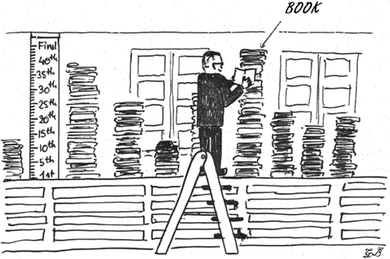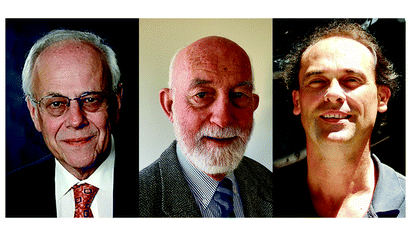Festschrift for Peter Toennies – New horizons in the dynamics of molecules: from gases to surfaces
Giorgio
Benedek
 ,
Joseph R.
Manson
,
Joseph R.
Manson
 and
Salvador
Miret-Artés
and
Salvador
Miret-Artés

Peter was born on May 3, 1930 in Philadelphia to parents who had emigrated from Germany not long after the First World War. Educated in public schools, he went to Amherst College and then on to the Department of Chemistry at Brown University where he received his PhD as the first graduate student of the very well-known Professor Edward F. (Ned) Greene. His research with Greene resulted in several papers, starting in 1957 with an article in the Journal of Physical Chemistry, but his very first paper dating from 1955 was actually done in Göttingen, Germany while he was among the first group of Fulbright exchange scholars after World War Two. In 1957 Peter accepted a position in the Chemistry Department of the University of Bonn, where he rose through the academic ranks until, in 1969, he was appointed Director at the Max-Planck-Institut für Strömungsforschung in Göttingen where, along with occupying a professorship at the University of Göttingen, he remained for the rest of his career. Currently he holds Emeritus status from both those positions, but still maintains an office at the institute (now the Max-Planck-Institut für Dynamik und Selbstorgansation) and is still regularly publishing scholarly articles.
Peter's initial research, both with Greene and during his Fulbright period at Göttingen was to measure the dissociation of nitrogen and carbon monoxide gases under bombardment with shock waves. At Bonn he initiated an extensive series of investigations involving molecular beams to study molecular properties and chemical reactions. This body of work eventually drew the attention of the Max Planck Society and resulted in his subsequent appointment as one of the four directors at the Max Planck Institut für Strömungsforschung. At Göttingen, Peter initially developed the crossed molecular beams scattering experiments that early on made his laboratory famous. A basic knowledge for the analysis of these experiments is that of intermolecular potentials, which led Toennies, together with K. T. Tang, to introduce the potential which bears their names. In the late 1970s and early 1980s he added a program of molecular and atomic beams scattering from surfaces. The initial major achievement of this program was the first complete measurement of the dispersion relation of the Rayleigh vibrational mode of a clean surface. This was followed by a systematic study of the surface phonon dispersion curves over the entire phonon spectrum in insulators, semiconductors and metals. The study of metal surfaces led to the formulation of the electron–phonon theory of inelastic He atom scattering, which greatly extended the amount of information on surface dynamical processes that can be obtained nowadays with He-atom scattering, as compared to other current surface probes. The huge body of work done in Peter's laboratory, as well as a review of the entire field of surface studies using helium atom beams, has recently been published in the monograph entitled “Atomic Scale Dynamics at Surfaces: Theory and Experimental Studies with He Atom Scattering” (Springer, 2018) coauthored by Peter with one of the guest editors for this themed issue, Giorgio Benedek.
The original work by Otto Stern with helium-atom scattering from a crystal surface was said to fill two needs with one deed: proving the quantum particle–wave duality for collective particles, namely atoms, as well as the ordered structure of crystal surfaces. Peter's work actually filled a few more needs with the single supersonic He-beam method. Besides learning about surface dynamical processes, Peter and his colleagues developed methods to create the most weakly-bound molecules known in the Universe which are helium dimers. This work gradually evolved towards studies of He trimers and small clusters of He, and eventually to larger 4He clusters enveloping foreign molecules. This cluster work enabled studies of the properties of molecules in that very special, superfluid environment. A major achievement was actually the demonstration that small 4He clusters stabilize against evaporation at 0.37 K and are superfluids even with a small number of atoms of the order of a few tens. More recently, the study of 4He supersonic beams from a solid source led to the astounding observation of a supersolid flow under non-equilibrium conditions. This discovery, though validating a 50 year-old prediction, has not yet received sufficient attention. The above brief review gives only a small picture of the ideas and research produced at Peter's laboratory in Göttingen, with many of them still waiting for a decent interpretation. Thus, data mining into Peter's huge archive still reserves surprises, like the observation with He scattering of low energy surface collective electronic excitations.
However, in addition to all of the scientific accomplishments to come out of Peter's laboratory, a major reason for the support of his many colleagues as expressed in this themed issue is the welcoming environment of scientific stimulation he created. The laboratory at Göttingen was a major center of attraction for scientists interested in elementary molecular processes and surface studies, and in addition to the many students and postdocs there were always numerous guests. In terms of students, over 130 Diplom (Masters) students and over 90 PhD degrees were graduated out of Peter's laboratory. The list of long-term guests such as postdocs and other visitors runs to over 200, and that does not include the 100 recipients of the prestigious Alexander von Humboldt Awards or Fellowships who spent their time in Germany as guests at his laboratory. This explains the conspicuous number of different projects running at any given time at the Toennies department, each one passing through several stages, always aiming for perfection (Fig. 1). We, the undersigned guest editors of this themed issue were long-term beneficiaries of this very special scientific scene and we can speak for all of these people when we express our thanks to Peter for creating such a warm, friendly and creative environment for scientific research.
In closing we would like to express our thanks to all of the contributing authors for the time and effort they have spent in making this an exceptional collection of papers. We would also like to thank the editors of Physical Chemistry Chemical Physics, including Kathryn Gempf and Chris Goodall, for their encouragement and generous efforts at making this themed collection possible.
Guest editors:
Giorgio Benedek, Università di Milano-Bicocca and DIPC, San Sebastián
Joseph R. Manson, Clemson University
Salvador Miret-Artés, CSIC, Madrid
| This journal is © the Owner Societies 2021 |


